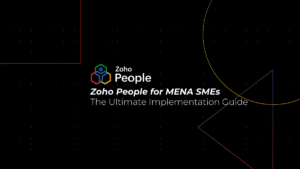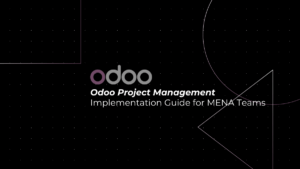Table of Contents
ToggleTable of Contents
- Introduction: The Cloud Cost Management Revolution
- Understanding Cloud Cost Management
- Definition
- Key Components
- Strategic Approaches to Cloud Cost Optimization
- Resource Allocation Intelligence
- Advanced Cost Tracking Techniques
- Digital Transformation Cost Efficiency
- Implementing Effective Cost Management
- Recommended Tools and Technologies
- Continuous Optimization Framework
- Cloud Service Provider Selection
- Evaluation Criteria
- Negotiation Strategies
- Maximizing Return on Investment
- Performance Metrics
- Cost-Benefit Analysis
- Real-World Success Stories
- Case Study 1: Enterprise Cloud Optimization
- Case Study 2: Startup Cloud Efficiency
- Future Trends in Cloud Cost Management
- Conclusion: Your Path to Cloud Cost Mastery
- Key Takeaways
- Call to Action
Introduction: The Cloud Cost Management Revolution
In the dynamic landscape of digital transformation, cloud cost management has emerged as a critical strategy for businesses seeking operational efficiency and technological innovation. As organizations increasingly migrate to cloud infrastructure, the ability to effectively manage and optimize cloud expenses has become a key differentiator in competitive markets.
Cloud cost management is no longer just a financial exercise—it’s a strategic imperative that directly impacts an organization’s agility, performance, and bottom line. This comprehensive guide will explore how businesses can transform cloud spending from a potential burden into a strategic advantage.
Understanding Cloud Cost Management
Definition
Cloud cost management is a holistic approach to tracking, analyzing, and optimizing expenses related to cloud computing resources and services. It encompasses:
- Comprehensive expense tracking
- Resource utilization analysis
- Strategic cost optimization
- Financial governance and control
Key Components
- Resource Allocation Optimization
- Identifying over-provisioned resources
- Right-sizing infrastructure
- Eliminating unnecessary expenses
- Cost Transparency
- Detailed expense breakdown
- Department-level cost allocation
- Comprehensive reporting mechanisms
- Strategic Planning
- Alignment with business objectives
- Long-term cost forecasting
- Continuous optimization strategies
Strategic Approaches to Cloud Cost Optimization
Resource Allocation Intelligence
- Implement automated scaling mechanisms
- Utilize reserved instances and savings plans
- Develop dynamic resource allocation strategies
Advanced Cost Tracking Techniques
- Real-Time Monitoring
- Implement cloud-native tracking tools
- Set up automated alert systems
- Create comprehensive dashboards
- Predictive Cost Analysis
- Leverage AI-driven cost prediction
- Identify potential expense anomalies
- Develop proactive optimization strategies
Digital Transformation Cost Efficiency
- Align cloud spending with strategic objectives
- Create flexible infrastructure models
- Implement continuous optimization processes
Implementing Effective Cost Management
Recommended Tools and Technologies
- Cloud Cost Management Platforms
- Native cloud provider tools
- Third-party optimization solutions
- Advanced analytics platforms
- Reporting and Analytics
- Real-time expense tracking
- Comprehensive visualization tools
- Detailed performance metrics
Continuous Optimization Framework
- Regular cost audits
- Performance benchmarking
- Adaptive resource allocation
- Ongoing training and skill development
Cloud Service Provider Selection
Evaluation Criteria
- Cost Considerations
- Pricing models
- Scalability options
- Total cost of ownership
- Technical Capabilities
- Performance metrics
- Security features
- Compliance standards
- Support and Relationship
- Vendor responsiveness
- Support quality
- Contract flexibility
Negotiation Strategies
- Compare multiple providers
- Leverage volume discounts
- Negotiate flexible terms
- Consider long-term commitments
Maximizing Return on Investment
Performance Metrics
- Cost per workload
- Resource utilization rates
- Efficiency benchmarks
Cost-Benefit Analysis
- Compare cloud vs. on-premises costs
- Evaluate indirect benefits
- Measure strategic value creation
Real-World Success Stories
Case Study 1: Enterprise Cloud Optimization
A multinational corporation reduced cloud expenses by 35% through strategic resource allocation and advanced tracking mechanisms.
Case Study 2: Startup Cloud Efficiency
A tech startup achieved 40% cost savings by implementing automated scaling and leveraging reserved instances.
Future Trends in Cloud Cost Management
- AI-Driven Optimization
- Machine learning cost prediction
- Automated optimization algorithms
- Hybrid and Multi-Cloud Strategies
- Flexible infrastructure models
- Cross-platform cost management
- Sustainability Considerations
- Green cloud computing
- Energy-efficient resource allocation
Conclusion: Your Path to Cloud Cost Mastery
Cloud cost management is a dynamic and critical aspect of modern business technology strategy. By adopting a comprehensive, strategic approach, organizations can transform cloud expenses from a potential financial burden into a powerful competitive advantage.
Key Takeaways
- Implement continuous optimization
- Leverage advanced tracking technologies
- Align cloud strategy with business objectives
- Remain adaptable and proactive
Ready to revolutionize your cloud cost management strategy? PyramidBITS offers expert consulting and cutting-edge solutions to optimize your cloud infrastructure and drive digital transformation.
Contact us today for a comprehensive cloud cost assessment!



